|
|
Dear colleagues
These are truly exciting times in the Photon Science Division:
The SwissFEL Aramis branch is transitioning to user operations. The first call for proposals was an overwhelming success leading to an oversubscription of about ten. This number shows the attractiveness of this new and wonderful machine to the science community.
The SwissFEL Athos branch is rapidly growing in the accelerator tunnel. We have hired a team of talented instrument scientists and started the endstation planning.
|

Christoph Bostedt
|
|
Following the 2017 spring users workshop, we kicked off technical SLS 2.0 beamline discussions for a conceptual design report. With the many interesting ideas on the table, I am confident that we can extend the leadership of SLS well into the next decade.
The key ingredients for these efforts are our staff and user community. Since I joined PSI earlier this year I have been continuously impressed with the high level and quality of the science at our facilities, the breadth of problems we are addressing with our photon tools, and foremost the ingenuity of our staff. Together, we will continue the success story and we are looking forward to receiving your input during our upgrade path and welcoming you at our existing and new facilities.
Christoph Bostedt,
on behalf of the Laboratory for Femtochemistry LSF, Photon Science Division
|
|
Next proposal submission deadlines:
Particle Physics
deadline: January 7, 2019
more information
SµS
deadline: February 28, 2019
more information
SLS: non-PX-beamlines
deadline: March 15, 2019
more information
SwissFEL
deadline: March 15, 2019
more information
SLS: PX beamlines
deadline: April 15, 2019
more information
SINQ (upgrade program 2019-20)
deadline: tba
more information
An overview about all proposal submission deadlines of the PSI facilities can be obtained here.
|
|
|
Discrete Hall Contribution of Magnetic Skyrmions
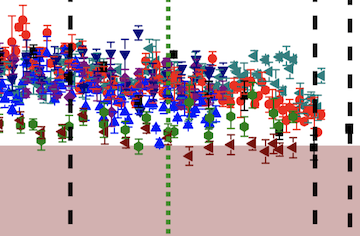 SLS - Contribution to the quest for high data density memory designs SLS - Contribution to the quest for high data density memory designs
Magnetic skyrmions, knot-like quasiparticles, have been recently attracting attention as candidates for novel high-density non-volatile data storage designs. In order to fabricate a skyrmion-based memory, reliable nucleation, motion, annihilation, and detection of the magnetic skyrmions need to be achieved. In this study, the electrical detection of magnetic skyrmions within a nanostructured element was carried out.
Read the full story
|
|
|
K. Zeissler et al, Nature Nanotechnology 13, 1161 (2018)
|
|
|
Dynamics of the Coordination Complexes in a Solid-State Mg Electrolyte
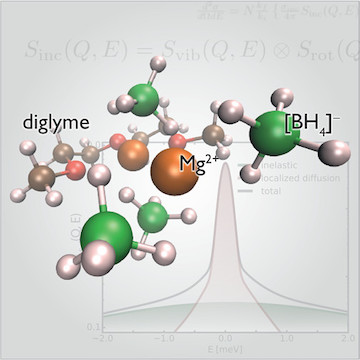
SINQ - Could Mg-batteries replace Li-ion technology?
Coordination complexes of magnesium borohydride show promising properties as solid electrolytes for magnesium ion batteries and warrant a thorough microscopic description of factors governing their mobility properties. Here, the dynamics of Mg(BH4)2-diglyme0.5 on the atomic level are investigated by means of quasielastic neutron scattering supported by density functional theory calculations and IR and NMR spectroscopy. Employing deuterium labeling, we can unambiguously separate all the hydrogen-containing electrolyte components, which facilitate Mg2+ transport, and provide a detailed analytical description of their motions on the picosecond time scale ...
Read the full story
|
|
|
T. Burankova et al, Journal of Physical Chemistry Letters 9, 6450 (2018)
|
|
|
Anomalous Hall Effect in Weyl Semimetal Half-Heusler Compounds RPtBi (R = Gd and Nd)
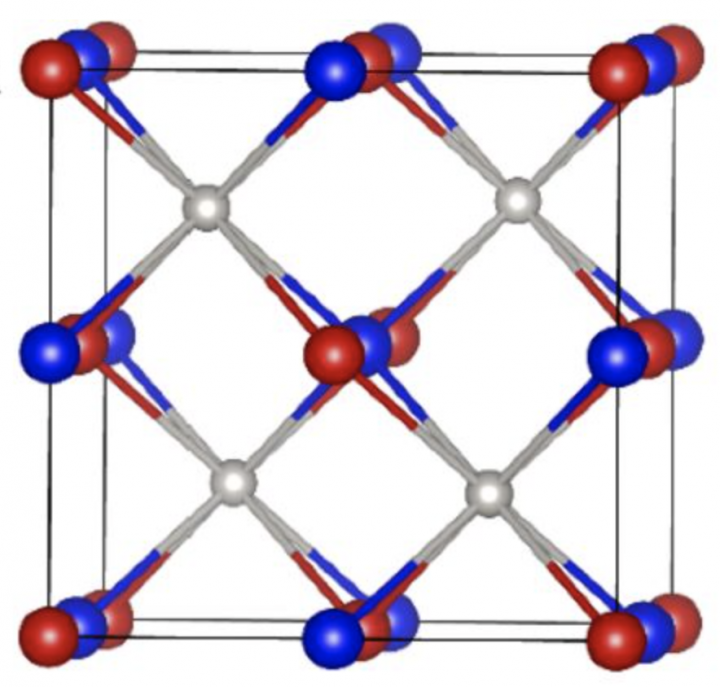 SμS - Magnetic field induced Weyl physics SμS - Magnetic field induced Weyl physics
GdPtBi and NdPtBi belong to the Heusler family of compounds and are conventional antiferromagnets below 9 and 2.1 K, respectively. We present evidence for magnetic-field–induced Weyl physics in these compounds, namely, a chiral anomaly (negative magnetoresistance) and an anomalous Hall effect (AHE) with a large anomalous Hall angle over a wide range of temperature. The AHE and chiral anomaly have a similar temperature dependence, indicating their common origin. These studies plus band structure calculations reveal that GdPtBi and NdPtBi develop Weyl points in the presence of an external magnetic field that arises from an exchange field. Our observations open the path to the realization of the quantum AHE in antiferromagnetic Heusler thin films.
Read the full story
|
|
|
C. Shekhar et al, Proceedings of the National Academy of Sciences, 201810842 (2018)
|
|
|
First Femtosecond Protein Pump-Probe Measurements at SwissFEL
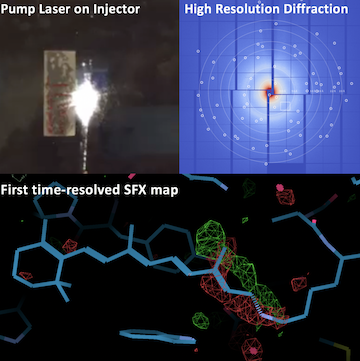 SwissFEL - Retinal proteins trapped in the act SwissFEL - Retinal proteins trapped in the act
A major milestone in the commissioning of SwissFEL has been reached: the first pump-probe experiments on proteins have been successfully carried out. Crystals of several retinal-binding proteins were delivered in a viscous jet system and a femtosecond laser was used to start the isomerization reaction. Microsecond to sub-picosecond snapshots were then collected, catching the retinal proteins shortly after isomerization of the chromophore. First, several snapshots in the picosecond scale were collected, providing important insights into the early changes in the chromophore and the protein. After commissioning further parts of the timing system, a first sub-picosecond time delay was chosen. At 800 femtoseconds, shortly after the isomerization, a highly distorted retinal could be observed that has not reached the relaxed all-trans geometry. This finding represents a breakthrough for SwissFEL and the photobiology community. Further measurements will shed light on the detailed mechanism of this photocatalytic process. Similar measurements will revolutionize our understanding of enzyme catalysis.
|
|
CMS Pixel Detector and Eccellenza Professorial Fellowship
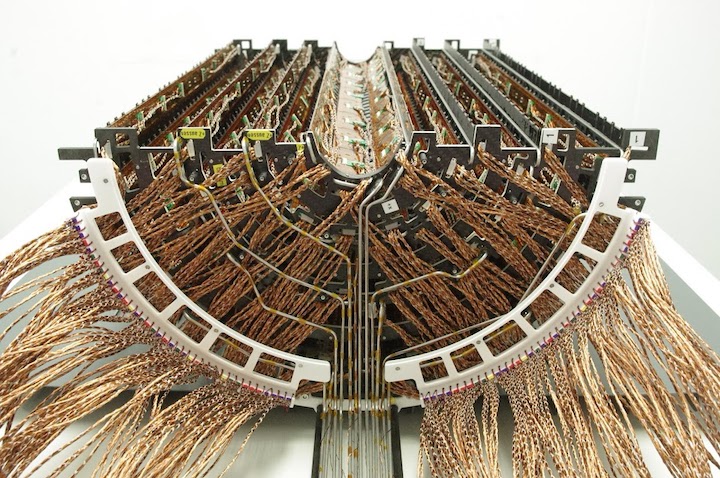 Particle Physics Particle Physics
On December 2, the LHC accelerator at CERN stopped and the two-year long shutdown started. The last two years have been very successful for the LHC and the CMS experiment, in which LTP’s High-Energy Particle Physics group is involved. An important part of CMS, the 4-layer barrel pixel detector, which was designed and build at PSI, contributed very much to its performance. It was essential in most physics analysis, e.g. the two highlight publications of 2018, the decay of the Higgs boson to two b-quarks and the associated production of Higgs bosons and t-quarks. In both cases, the excellent position resolution of the pixel detector made it possible to recognize displaced b-jets enabling the identification of b- and t-quarks. The two-year break in the LHC operation does not mean that the LTP group will stay idle. Pixel modules in the Layer-1 of the barrel detector need to be replaced. These modules are close to the beam and suffer from radiation damage with the present accumulated dose exceeding 40 Mrad. New pixel modules will be built in 2019 and will be installed in 2020. In addition, the group is strongly involved in the Phase-2 upgrade of the CMS tracker to be ready for 2026.
The PSI pixel group got a significant boost through the positive decisions by the Swiss National Science Foundation (SNF) to award an Eccellenza Professorial Fellowship to one of our colleagues, Lea Caminada. Her professorship will be at the University of Zurich and together with her group she will be hosted by LTP at PSI.
Read the full story
|
|
CALIPSOplus - I3 Access Program also for Industry
SLS
CALIPSOplus, a European Horizon2020 funded research and innovation program, provides access support for Small and Medium Enterprises (SMEs) to light sources. The proposal confidentiality is kept during the whole process. If the proposal is accepted, the SME will have access to the requested light sources and the experiments will be financially supported through CALIPSOplus. If you work with companies, please point out this possibility, more information.
For industry use, SLS and SwissFEL also offer direct access through the proprietary route, as well. Read more.
|
|
New Triple-Axis Spectrometer CAMEA Successfully Commissioned
SINQ and Particle Physics
At the end of October, the multiplexing spectrometer CAMEA (Continuous Angle Multiple Energy Analysis) went into hot commissioning. The completion of the instrument in 2018 was only possible thanks to the strong commitment and enthusiasm of the personnel from several groups and laboratories. The CAMEA design is optimized for detection efficiency in the horizontal scattering plane and hence is particularly suited for experiments using restrictive sample environments and small sample volumes. First successful experiments demonstrate the enormous potential of the concept for rapid and detailed mapping of excitations.
Part of the commissioning was the validation of the new front-end electronics that was designed by the Group 'Electronics for Measuring Systems' of the Laboratory for Particle Physics in particular for charged-division based gaseous detectors. The key elements of the design are plug-in based pre-amplifier and filter stages, followed by a continuous sampling, a powerful FPGA for digital signal processing and a SFP- and a QSFP-slot for data transfers with Ethernet or proprietary protocols. In the current setup for CAMEA, the sampling rate is 50 MSPS at 14-bit resolution and in this configuration, a spatial resolution of <5 mm (FWHM) along a 900 mm long Helium-3 proportional counter tube could be achieved. |
|
Decommissioning of the LTF Instrument: the End of an Era
SμS
For more than 30 years, the first user facility instrument LTF at SμS has provided the scientific community with excellent experimental capabilities for μSR experiments at millikelvin temperatures. The multitude of successful experiments lead to more than 400 publications in scientific journals. In October 2018, the LTF era has ended and the instrument has been decommissioned. LTF will be replaced by the new FLexible and Advanced MuSR Environment (FLAME). The first µSR pilot experiments using FLAME are expected to take place in 2020.
|
|
First Open Call for Proposals
SwissFEL
The first SwissFEL call for proposals took place, deadline for submission was the 15th of September. In this first call for proposals SwissFEL received overwhelming interest from the user community. A total of 47 proposals were submitted for the SwissFEL Alvra experimental station and 26 for the Bernina experimental station. The Proposal Review committee PRC took place on 18-19 October 2018. Due to the early operation phase of the facility only a reduced number of user shifts is available, resulting in SwissFEL being overbooked by a factor of 10 and an extremely strong competition for beamtime.
|
|
JUSAP - The Joint Users Association
Dear colleagues
after the Pilot experiment phase in 2018, first user experiments at the X-ray free electron laser facility SwissFEL will take place in January 2019. The goal for the first half of 2019 is to balance user operation with remaining machine/photon/experimental commissioning requirements.
|
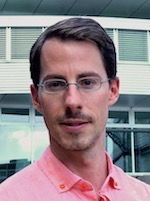
Claude Monney
|
|
For the next call of March 15th, 2019, the number of allocated experiments will be increased. We therefore encourage all user communities, FEL and new, to contact the beamline scientists to prepare their proposal.
Representatives from the European Synchrotron and FEL User Organisation (ESUO) were invited to take part to the first Plenary Meeting of LEAPS (League of European Accelerator-based Photon Sources) which was held at DESY (Hamburg, Germany), from November 12th to November 14th, 2018. Detailed information about the meeting can be found here.
Moreover, the first ESUO Regional Workshop is foreseen to take place on August 28th, 2019, as a satellite event of the Photonica2019 conference (Belgrade, Serbia). More information about the workshop program is foreseen to come soon.
We encourage you, members of the PSI user community, to communicate to us any issues, concerns or suggestions. In this case, please contact me directly or other committee members.
Yours sincerely,
Claude Monney, Joanna Hoszowska, Annick Froideval, on behalf of the JUSAP committee
|
|
Upcoming events
Please have a look at our conference calendar.
|
|
|
|